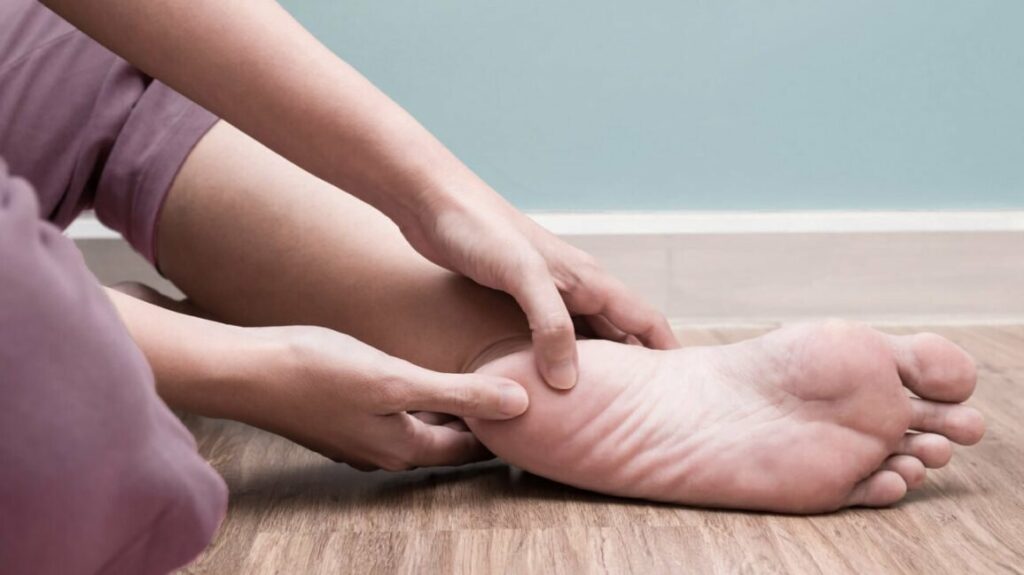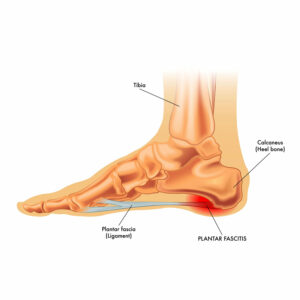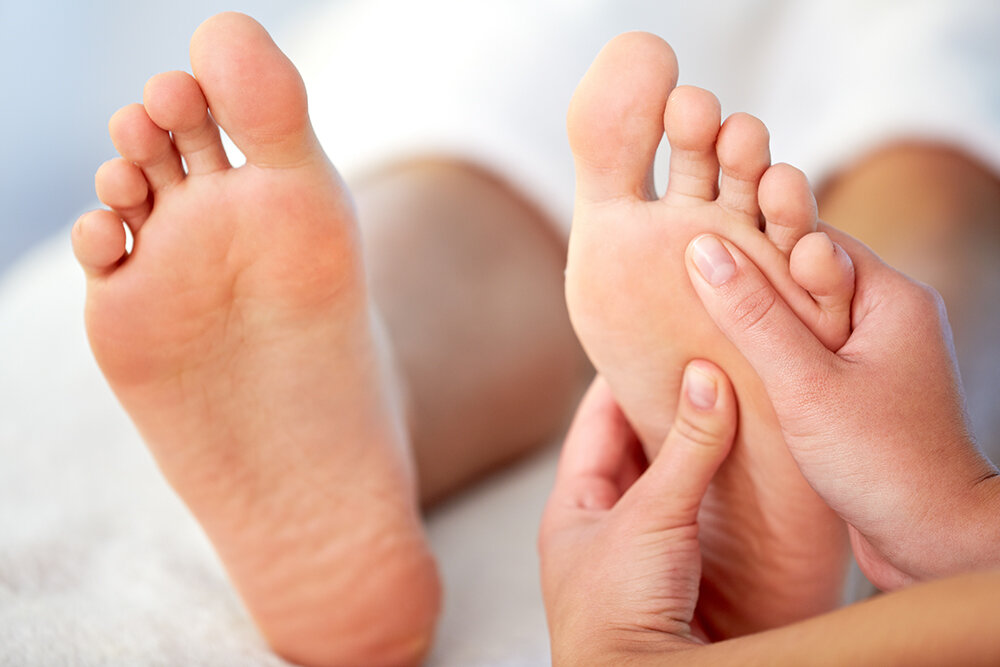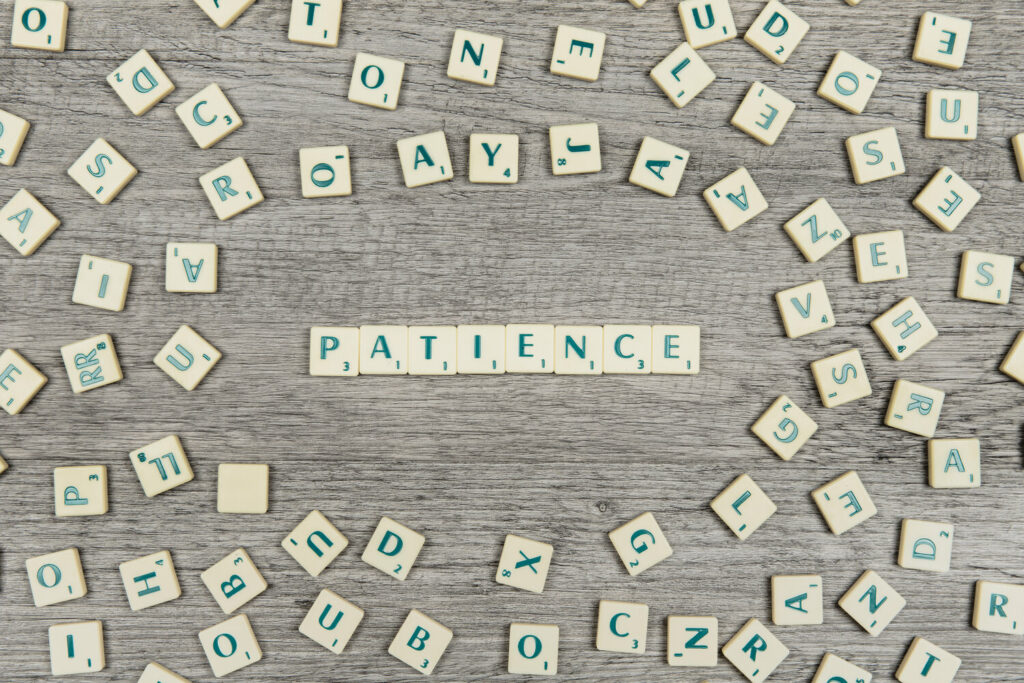What Is Plantar Fasciitis (Fasciopathy)?
Plantar fasciitis or what we refer to now as Plantar Fasciopathy is one of the most common causes of plantar heel pain in both runners and non-runners. It is one of the most prevalent causes of foot and heel pain in general with almost 10% of people experiencing plantar fasciopathy in their lifetime.
There have not been any links to one gender more than the other and it affects both sedentary and athletic populations. Although it can occur at all ages, the highest risk of occurrence of plantar fasciopathy is middle-aged and older adults between 40 and 60 years of age.
Plantar Fasciopathy mainly affects only one foot, although approximately 30% of individuals have bilateral symptoms.
Why are we calling it fasciopathy? Recent literature suggests that it is more correctly defined as a fasciopathy than fasciitis. This is due to the chronicity of the disease and the evidence of it being a degeneration of the plantar fascia rather than an inflammation.
Similarly, to tendinopathies, the exact cause of plantar fasciopathy is still relatively unknown. However, what we do know is that there is a change in the mechanical relationship between the tendon; in this case the plantar fascia, and the loads that it is put under.

Structure And Function
The plantar fascia is a thick band of fibrous connective tissue spanning the arch of the foot from the heel bone to the bases of the toes. The plantar fascia resembles both tendon and ligament and is relatively inelastic. It is composed of collagen fibers creating a wavy pattern, produced by elongated fibrocytes embedded in longitudinal rows. Due to excessive loading, it is the progressive degenerative change in this matrix structure that leads to plantar fasciopathy.
Simply put, the plantar fascia which is a strong thick band under your foot that is built to help absorb loads doesn’t like performing the jobs you expect it to or want it to. These jobs could be running, dancing, walking, or standing for long periods.

What are the Signs and Symptoms of Planter Fasciitis?
The primary symptom for most is pain and tenderness on the sole of the foot. This is usually located on the inside aspect of the heel (medial tubercle of the calcaneus). Other common symptoms are:
-
Pain and stiffness in the morning
-
Increasing pain with weight-bearing activities; running, jumping, dancing, long periods of walking and standing
-
Pain levels vary depending on the person and activity levels. Some may have lower levels of pain and feel slight stiffness. Others may experience more intense pain and describe ‘stabbing’ or ‘throbbing’ pain
For the runners;
-
Stiffness on commencing running that reduces as you ‘warm up’. The ‘stiff and painful’ tendon ‘warms up’ after an initial period of pain/discomfort, as the plantar fascia gradually becomes a more efficient spring.
-
Pain that increases with greater running volume and intensity.
-
Heightened pain and stiffness in the heel region 24 hours after exercise (ie the next morning).

How can you Diagnose Planter Fasciitis?
A good subjective (clinical history) along with positive tenderness findings on palpation of the medial calcaneal tubercle are all that is needed to accurately diagnose plantar fasciopathy.
Do you need imaging? No.
An MRI can show thickening of the tendon; however, it can easily be diagnosed in a consultation. What imaging may show is calcification in the soft tissues around the heel or bony growths on the front of the heel bone, known as heel spurs. 50% of individuals with plantar fasciopathy and up to 19% of individuals without plantar fasciopathy have heel spurs. The presence or absence of a heel spur is not helpful in diagnosing plantar fasciopathy.
Imaging should be reserved for atypical presentations and those that do not respond to initial treatment.

What are the Recovery Times of Planter Fasciitis?
There are no clear timeframes for recovery from a Plantar Fasciopathy. This is largely dependent on the individual, their level of pain and the loads that the Plantar Fasciopathy endures on a daily basis. Some low irritation or mild discomfort pains can resolve in a matter of a few weeks, others can take years. Research (HERE) shows 90% of the population have been shown to find a complete resolution to their pain, although it can take 3-6 months.
The key message is to remain patient and invest in the process. It may take a long time but if you follow the correct advice, you will get there.

How Can You Treat Planter Planter Fasciitis?
Research suggests the key and core treatments (HERE and HERE) are; Education, Exercises, Taping, and Stretching.
-
Education – so you can better understand the pathology, the reason for your pain and symptoms and how to help manage these through activity modification and the following core treatments.
-
Exercises – The number #1 approach! Your plantar fascia was built to withstand very high loads, it is just aggravated due to feeling overworked and needs to relearn how to take on these loads. This is done by gradually progressing through a heavy loading exercise programme. Research demonstrating this can be found HERE.
-
Taping – This has been shown to be an effective pain management technique in the short term. A reduction in pain also has a positive effect on one’s confidence.
-
Stretching – There is moderate evidence to support the use of plantar fascia stretching to relieve pain in the short term. This has been shown to provide immediate relief and is recommended throughout the rehabilitation process.
Other useful treatments…
Orthotics – orthotics decrease heel rise and force placed on the Achilles, resulting in pain reduction. Both prefabricated and custom-fitted orthotics have been shown to reduce pain and improve function in the short term. Interestingly refabricated foot orthotics such as gel heel cups, longitudinal arch supports, and full-length shoe insoles have been shown to be more effective than custom shoe inserts.
For those unfortunate enough to experience Plantar Fasciopathy for longer than 6 months, there are other non-operative treatments that may be worth considering; however, these should be discussed with a healthcare professional.
-
Extracorporeal Shock Wave Therapy (ESWT) or Shockwave Therapy is one of these. Shockwave is a treatment that delivers precise mechanical energy pulses to tissues within the body; to help promote and stimulate localised healing. Shockwave is becoming increasingly popular in the management of tendinopathies and now plantar fasciopathy and has been shown to have positive effects in some people HERE.
There are further options, but they should not be considered lightly, as these are seen as more experimental treatments. They again require further consultation with a healthcare professional.

Take-Home Message
Plantar Fasciopathy is a mechanical problem as a result of excessive loads that leads to degeneration of the plantar fascia. You don’t need imaging to diagnose it but it can be useful if treatment is not found to be effective or another pathology is being considered. The best treatment is a multi-approach consisting of; education, exercise, taping and stretches. The length of time to recover can vary greatly depending on the individual and their response to treatments.
Keep patient, keep going and you will get there.
We are here for you
If you’re in pain and would like to talk to us about getting some help, some specialist advice, or if you are looking for a diagnosis, remember we are always here to help you.
Appointments remain limited and we are experiencing an exceptionally high demand for our physio services since UK restrictions were lifted, so please contact us immediately to avoid a long wait.
If you would like to get one of our limited slots, please click HERE to email or CALL us on 07900603617.





